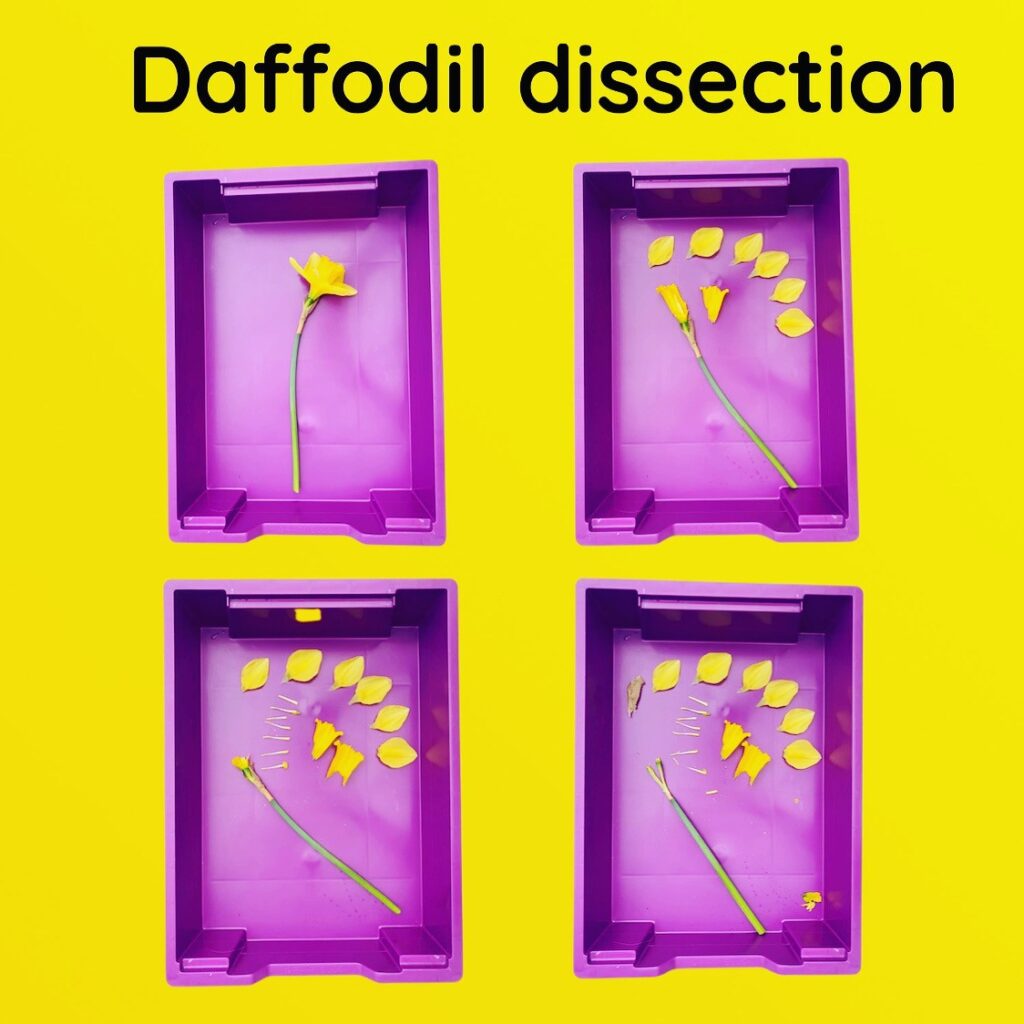Daffodil dissection with AmazeLab
Take a closer look at daffodils with this #WhatsInMyTray dissection activity.
Equipment:
- Gratnells tray
- Daffoldil
- Knife (ask an adult)
- Remember to wear gloves or wash your hands very well afterwards as daffodils can irritate skin and are poisonous, please keep the daffodil away from your mouth.
What to do:
- Take a close look at your daffodil, are you able to see the two layers of petals that give the daffodil it’s really well known shape? These two layers are the petals and inner trumpet (corona). At the base of the flower the brown like covering is called the spathe. This starts its life wrapped around the bud before the flower is ready to open.
- Using your fingers carefully peel the petals from the flower laying them out so you are able to take a closer look.
- You are now able to see the corona that contains the inner parts of the flower. Carefully peel this part of the flower.
- You will now be able to see the inside parts of the flower – the male and female parts – these are required to make more daffodil plants.
- Six stamens are present around the outside including the filament (looks like a stalk) and the anther (pollen covered end). This pollen is needed to fertilise the female part of the plant to grow new plants.
- The female part of the plant is called the pistil and contains the style (the long tube part) and stigma (the top part) plus the ovary and ovules
- As the flower dies the ovary swells as the seeds develop, are you able to see this? Ask an adult to use a knife to carefully cut down the middle including the ovary and stem.
- Can you see all of the different parts of the daffodil?
- Are you able to label each part of the daffodil?
- Daffodils are insect pollinated meaning they rely on insects moving from flower to flower collecting nectar, picking up pollen and depositing it on other flowers. Are you able to investigate how other types of plants are pollinated?


